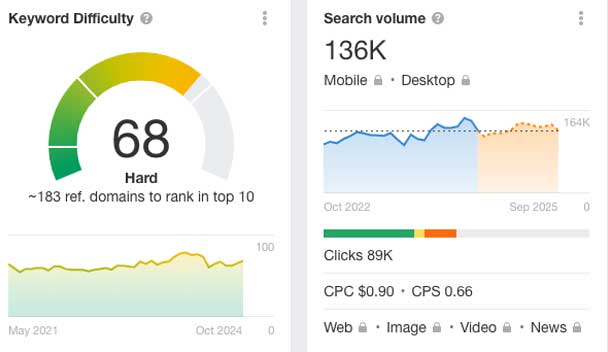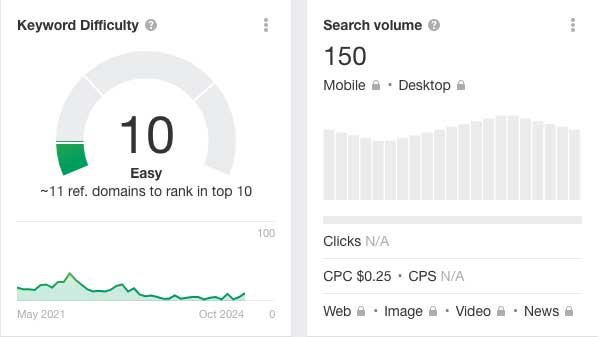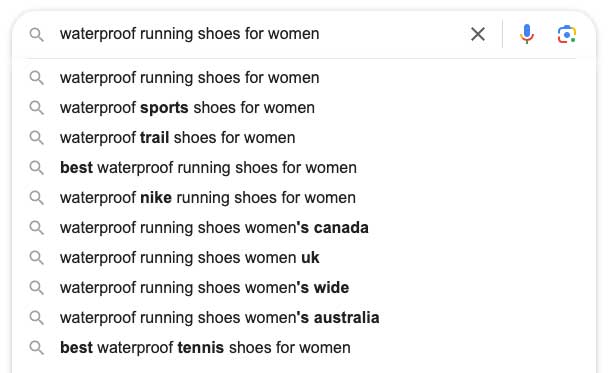Long tail keywords are essential for SEO strategies. These are phrases consisting of three or more words that are highly specific and less commonly searched than broad keywords. While their search volume is lower, they tend to bring in more qualified traffic. And because they are less competitive, businesses can rank higher on search engines and attract visitors more likely to convert into customers.
What Are Long Tail Keywords?
Long tail keywords are longer, more detailed search queries. They often reflect the specific intent of the user. For example, instead of searching for “running shoes”, a long tail keyword would be “best marathon running shoes for under 100”. These keywords are usually less competitive, making it easier for smaller or newer websites to rank.
Long tail keywords also reflect better user intent. A person searching for a detailed query often knows exactly what they’re looking for, which leads to higher conversion rates compared to broader terms.
Additionally, they typically address niche queries and are more specific. People who use long tail keywords are more likely to be ready to purchase, making them valuable for businesses.
Long Tail vs Short-Tail Keywords
Short Tail Keywords
Short tail keywords are general, broad phrases consisting of one or two words (e.g. “running shoes” or “movies”). They have high search volumes but lack specificity, making it nearly impossible to figure out the user’s intent. Plus, they are extremely difficult to rank for highly.
Long Tail Keywords
Long tail keywords are more specific and typically contain three or more words (e.g. “best marathon running shoes for women under 100”). These queries have lower search volumes but far less competition. They reflect clearer user intent and often target users who are closer to making a transaction.
Why Focus on Long Tail Keywords?
Lower Competition
Long tail keywords face less competition. Ranking for broad, high-volume keywords is hard, especially for newer sites. By focusing on long tail keywords, businesses can stand out in niche markets. Large companies dominate the top results for short-tail keywords. Trying to compete with them can be an uphill battle.

Higher Conversion Rates
Visitors using long tail keywords often have clear intent. They are further along in the buying process, which means they are more likely to convert. When your content matches these specific searches, you can deliver exactly what the user needs.
Cumulative Traffic
While each long tail keyword may have a lower search volume, targeting many of them can generate a lot of traffic. Over time, the traffic from multiple long tail keywords can add up and have increased results. You’re then casting a wide net that brings in targeted traffic from various angles and are not relying on one or two highly competitive terms.
Types of Long Tail Keywords
Topical
These are detailed search queries that focus on a specific topic. They could be a particular product, service, or question. For example, “how to clean gore-tex jackets” is a topical long tail keyword that requires content that answers this question.

Supporting Keywords
These are keywords that revolve around a primary keyword. They are often variations or related phrases. For example, if the main keyword is “running shoes for women”, supporting long tail keywords might include “waterproof running shoes for women” or “trail running shoes for women”. These keywords help support the main topic by expanding its reach.

Transactional
Transactional keywords reflect a user’s intent to make a purchase or perform a specific action. These often include words like “buy,” “order,” or “offers”. Examples might include “buy waterproof running shoes” or “offers on mobile phone contracts”. Targeting transactional long tail keywords can lead directly to sales or conversions.
Informational
These are keywords that signal a user’s search for information or help. Queries like “how to improve website SEO” or “best techniques for growing tomatoes” are examples. While they may not lead directly to a purchase, informational long tail keywords are excellent for building trust and authority. By answering these questions, you can guide users further down the sales funnel.
How to Find Long Tail Keywords
Keyword Research Tools
Using tools like Google Keyword Planner, Ahrefs, or SEMrush can help uncover long tail keywords related to your business. These platforms provide data on search volume, competition, and potential variations of your primary keywords. Many tools also suggest related terms that you might not have thought of, which can be handy for finding alternatives or ideas.
Competitor Analysis
Analysing the content and keywords your competitors rank for is a way to find untapped long tail keywords. Look for specific niche topics or keyword opportunities your competitors have overlooked, and focus on targeting those. Ahrefs and SEMrush allow you to see which keywords competitors are ranking for, and you can identify opportunities to rank for similar variations.
Manual Methods
Explore forums, social media, and online communities to see what questions people are asking in your niche. Google Suggest is also a powerful tool. Simply start typing a broad keyword, and Google will offer suggestions based on popular searches.

Less Conventional Methods
Platforms like Reddit, Quora, and niche forums can offer insights into the questions and problems your audience faces. See what people are discussing to discover unique long tail keywords with less competition.
How to Optimise Content
Structure Your Content
Ensure that your content is structured and easy to navigate. Break it down into sections that address different aspects of the keyword. Use clear headings and subheadings, and make your content easy to go through.
Write Clearly
Search engines prioritise user experience, so it’s crucial to write for your audience first, not just for search engines. Focus on answering the user’s query with detailed information. Readers want valuable content that helps solve their problems, and writing naturally improves user engagement and satisfaction.
Use Multiple Long Tail Keywords
One piece of content can rank for multiple keywords if it’s structured properly. Add various related keywords naturally within the content, and address different areas within the same topic. This approach expands the reach of a single article, allowing it to catch get traffic from different searches.
Use Long Tail Keywords in Key Areas
To optimise your content, place long tail keywords in critical areas, such as the title tag, meta description, and headings. Make sure they fit naturally into the flow of your content. The better your on-page SEO aligns with user intent, the more likely you are to rank for those queries. If you are using WordPress, then tools such as Yoast or Rank Math can be helpful assistants.
Common Mistakes to Avoid
Over-Segmenting Content
One common mistake is creating separate pages for every slight variation of a keyword. This can result in thin content that doesn’t provide enough value. Instead, group related keywords together within complete content. Fewer but higher-quality pages will benefit the user and search rankings.
Ignoring the User’s Wants
Some marketing professionals focus solely on keyword length rather than understanding user intent. Always think about the meaning behind the search. Users want solutions, and the better you understand their intent, the more likely you are to provide valuable answers.
Focusing Only on Volume
While it’s tempting to chase high-volume keywords, ignoring long tail keywords can be a mistake. These keywords, although lower in volume, can collectively bring notable traffic and lead to better conversions. Focusing too much on search volume also runs the risk of attracting less qualified visitors who are less likely to convert.
Conclusion
Take time to research, optimise, and integrate long tail keywords into your overall SEO plan. They may not bring instant results, but the cumulative effect will build over time.
